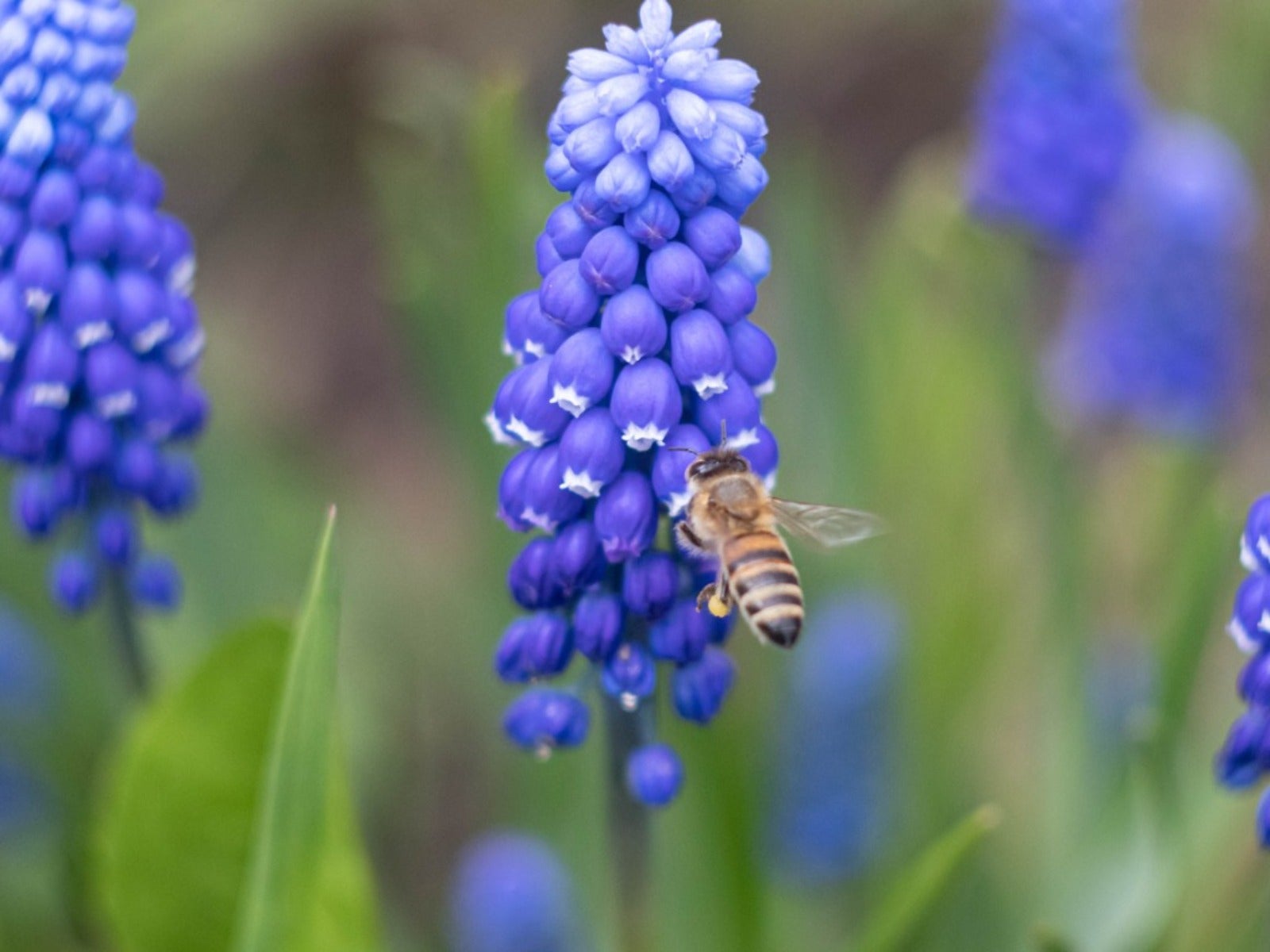Pretty Spring Bulbs For Pollinators


Spring bulbs are beloved by gardeners because they are the first flowers to emerge in winter, some even blooming while there is still snow on the ground. Another great reason to embrace these bulbs is to support pollinators. Early spring is a tough time for bees and other insects that rely on flowers. Give them a boost with some pollinator friendly bulbs.
The Best Spring Bulbs for Bees Are Native
It’s not just bees, but any pollinators really. Native species co-evolved with pollinators, so they offer the best resources. Bulbs for a butterfly garden or just to give local bees a boost should be native. Here are some good options for many North American gardens:
- Trout Lily -- Trout lily is a true bulb native to most of the eastern U.S. The spotted yellow leaves that resemble the shape of a fish give these flowers their name. By planting trout lily bulbs in fall, you’ll be supporting the trout lily bee, a species that evolved alongside the flower.
- Spring Beauty -- Claytonia virginica is also native to the eastern part of the country. It is a corm rather than a true bulb but can be planted in fall along with bulbs. The flowers are delicate and pretty with five pink-striped, white petals per bloom. Spring beauty grows short and supports the small bee Andrena erigeniae.
- Dutchman’s Breeches -- This evocative name describes the shape of the flowers, which resemble upside down pants of a creamy white color. The leaves are attractive too and have a fern-like texture. Dutchman’s breeches are native to the eastern states and the Pacific Northwest. Bumblebees enjoy these flowers.
- Virginia Bluebells -- Despite its name, this pretty spring flower is native to much of the eastern and some central U.S. states. More rhizomes than bulbs, you can plant Virginia bluebells in fall with spring bulbs. The flowers emerge as bell-shaped blooms that pollinators enjoy.
- Jack-in-the-Pulpit -- This is yet another name that closely describes the flower shape. Each plant produces a large, hooded spathe (pulpit) that surrounds a spike of small flowers (Jack). Grown from a corm, these unusual flowers thrive in shady, wooded areas and emerge early in spring. As a bonus, Jack-in-the-pulpit will produce berries later in the summer to feed native birds.
Non-Native Pollinator Bulbs
While the absolute best spring bulbs for pollinators are native, they’ll also enjoy some non-native types. There is no need to deny yourself the beauty of your favorite spring blooms, like tulips and daffodils, but choose wisely to best feed your local pollinators.
Hybrids of these non-native species were developed to look pretty for humans, but many of the changes made them less useful for pollinators. For instance, the double and triple flowers with masses of petals render the nectar impossible to reach. Some hybrids produce less aroma and aren’t as attractive to pollinators.
If you want to include non-native bulbs in the garden, choose varieties that have not been highly modified. Crocuses, simple tulips, and muscari (grape hyacinth) are among the best choices for non-native spring bulbs that support pollinators in early spring.
Earliest Spring Bulbs
Native or not, your pollinators will appreciate having early bloomers at the end of winter. It’s a tough time for a pollinator that emerges as the temperatures warm but before many flowers have bloomed. To give them the best chance of survival during this tricky period, include some of the bulbs and corms that send out the earliest late-winter and early-spring flowers:
- Snowdrops
- Crocus
- Glory-of-the-snow
- Striped squill
- Siberian squill
- Iris reticulata
- Yellow trout lily
- Spring beauty
Whichever spring bulbs you choose, remember to plant them in fall. This is what ensures they bloom on time in spring. Follow the instructions for each plant, which usually includes digging deep enough and making sure you put the bulb in the right way up.
Sign up for the Gardening Know How newsletter today and receive a free copy of our e-book "How to Grow Delicious Tomatoes".

Mary Ellen Ellis has been gardening for over 20 years. With degrees in Chemistry and Biology, Mary Ellen's specialties are flowers, native plants, and herbs.